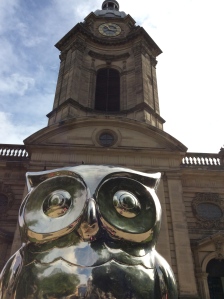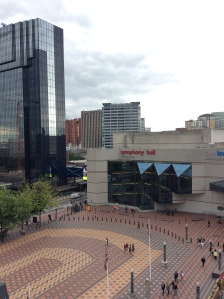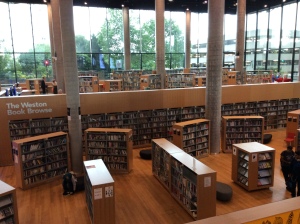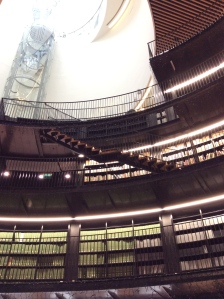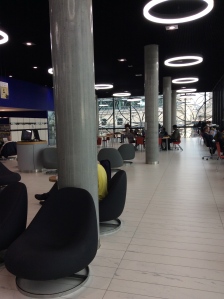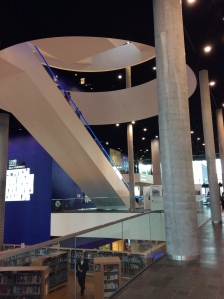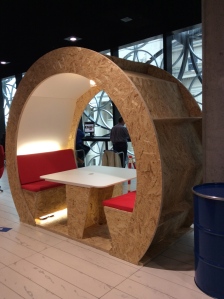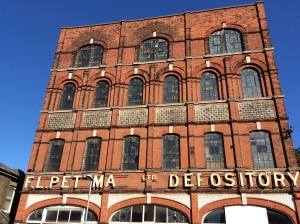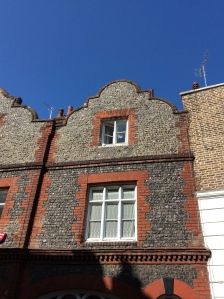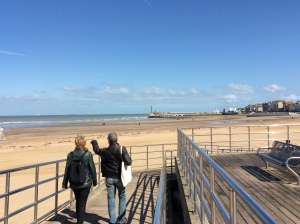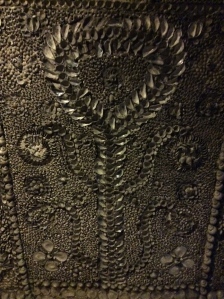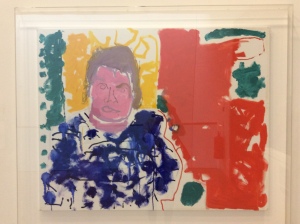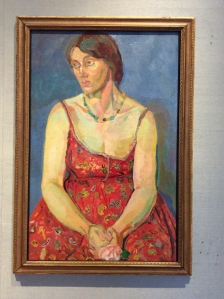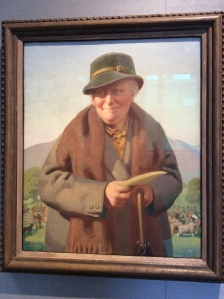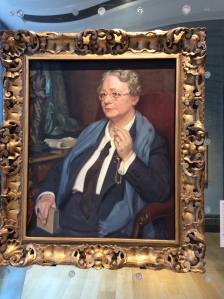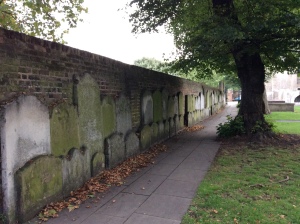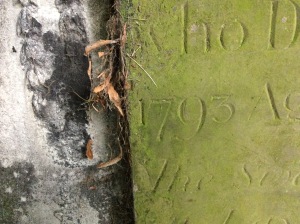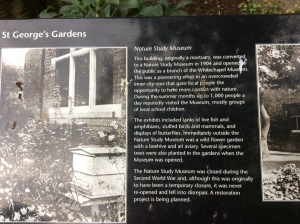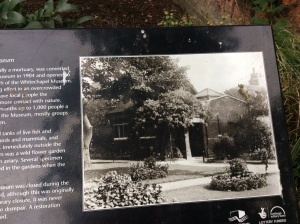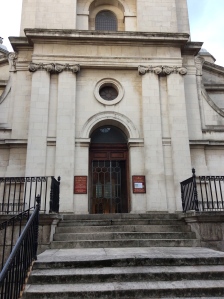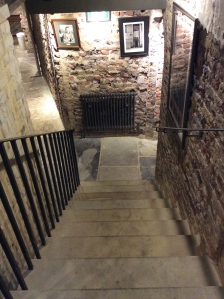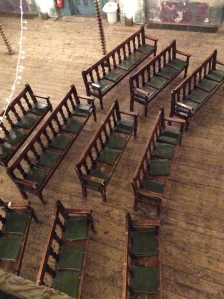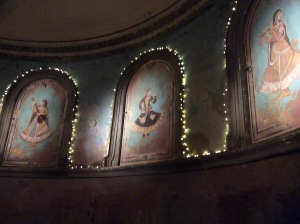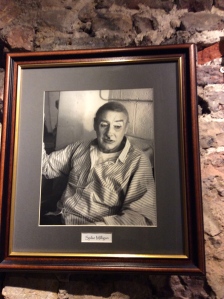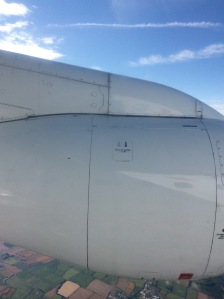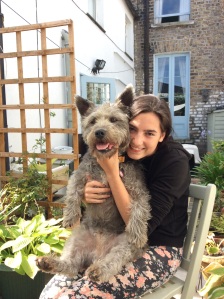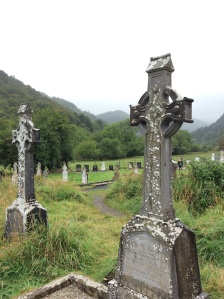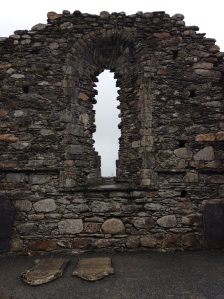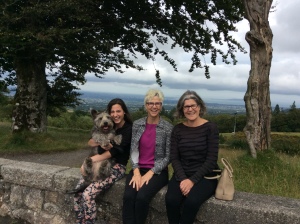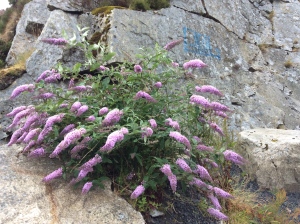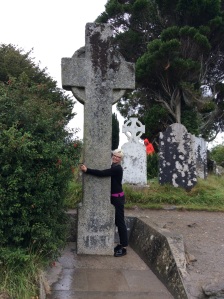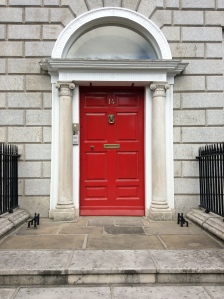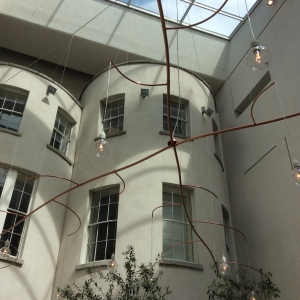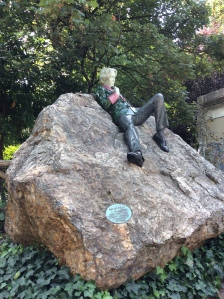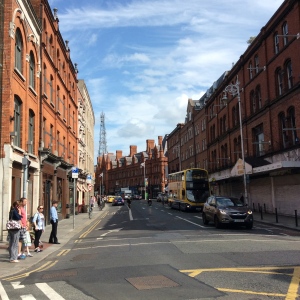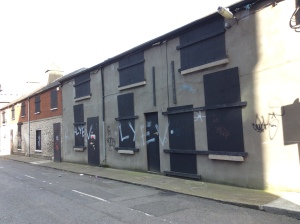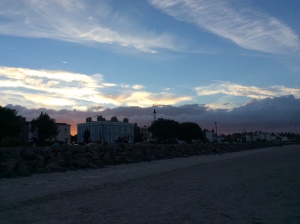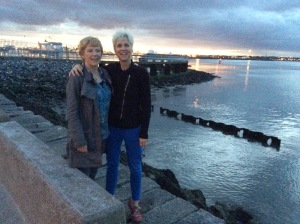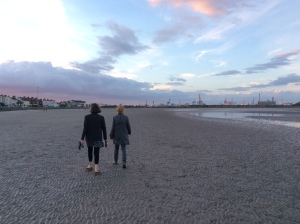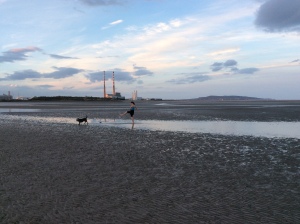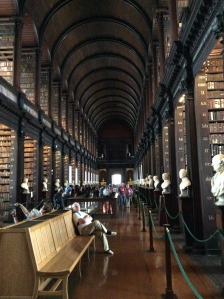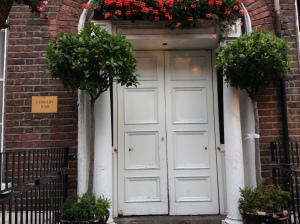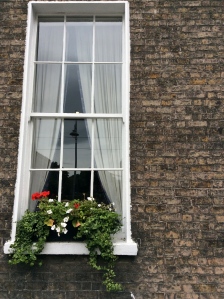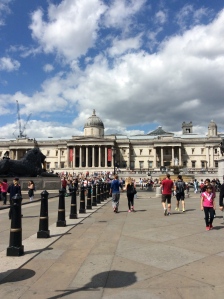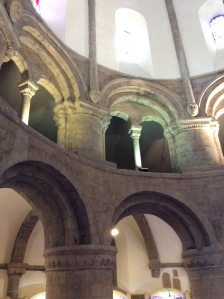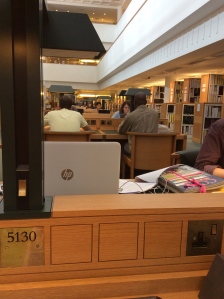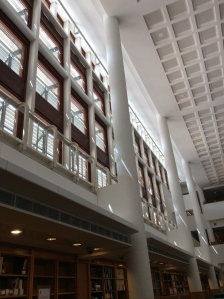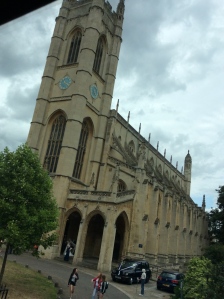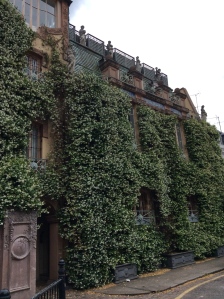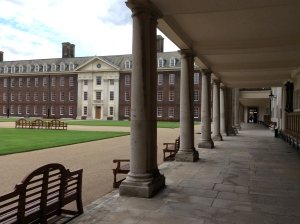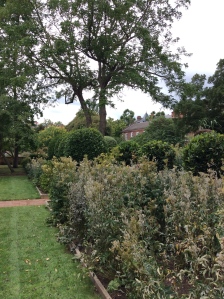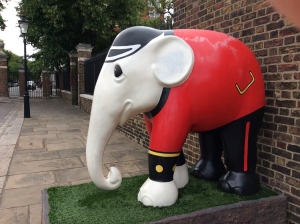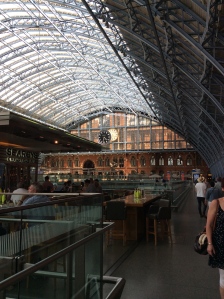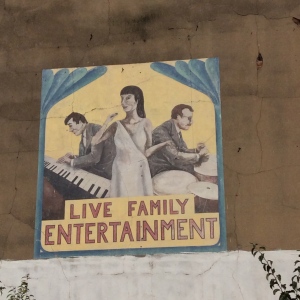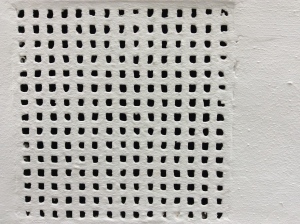It feels like awhile since I have posted and it’s been a busy time. I’m feeling the trip winding down on some level since I have only 2 weekends left (!) before my flight home on October 2. We have lots planned this month – plays and performances, galleries and social time. Always an embarrassment of riches, this town. I’ve gone to a book arts fair at Whitechapel Gallery; a performance of the Restoration comedy, Beaux Stratagem, at the National Theatre; a spa night at the Porchester Baths; a visit to the National Portrait Gallery (a few pics below); lots of swims at the London Fields Lido; and the usual research days at various cafes and libraries around town. I’ve been slowing down on the photo taking since the ipad, as noted, is a little inconvenient to lug around. Hence, perhaps, more text …
A couple of weeks ago, I took a trip to Birmingham to see the Love is Enough exhibit at the Birmingham Museum and Gallery. The exhibit, curated by noted artist Jeremy Deller, drew connections (sometimes successful, sometimes a little less so) between Andy Warhol and William Morris. The strongest connections, to my mind, were the similarities to Warhol’s Factory framework and the William Morris company. I loved seeing some of Warhol’s paintings again – especially the series of Chairman Mao, for some reason, they really struck me as brilliant! And the large scale tapestries of the King Arthur story by William Morris & Co, part of the core collection of the Birmingham Gallery and unique to this showing of the touring exhibit – incredible art AND craft!
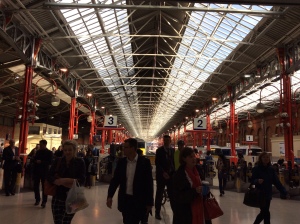
The two hour journey to Birmingham started at the Marylebone train station, several blocks west of Kings Cross/St Pancras (the other BIG stations)
Since the exhibit did not allow any photos, the rest of my Birmingham pics are mostly of the The Library of Birmingham, a new public library building that opened to much fanfare and some controversy 2 years ago. I liked it. Having gone through the process of a new library building at Ryerson the past several years, I have some sympathy for how difficult it is to get these things right. Public libraries are fascinating places in transition – part cultural site, part community hang-out, part research and study facility, lots of children’s programming, and part collection, straddling the world of print and digital. I was surprised at how much space they devoted to reference book stacks: I would have put them in storage! The way these inner circular stacks were designed was a nod to the early 20th century (and before) and were very incongruous to the otherwise postmodern building.

The Birmingham Library, on the left. I meant to do a little more in terms of galleries in Birmingham, but as you can see from the sky, the weather deterred my plans.
Another recent outing was a trip to Margate – about a 90 minute train ride from London – with Frank, Ruth and Steven and their daughter and her boyfriend, Gabrielle and David. The seaside town boasts past residents the likes of T.S. Eliot and J.M.W. Turner. A new gallery, The Turner Contemporary, was our main destination as it was holding an exhibition of the audacious cultural commentator and contemporary British artist, Grayson Perry

T.S. Eliot came to Margate to convalesce following a breakdown and part of The Wasteland was written during this time. Apparently this is a spot where he would come and sit – I was hoping for some poetic inspiration!
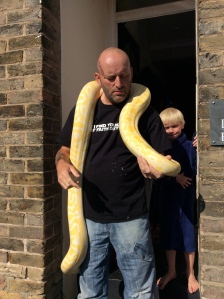
We happened upon a man standing in the sun on his front steps (son behind him) holding his pet albino boa constrictor. We had a long chat and now I know more than I want to know about these strange creatures (the pet owner included). He has about 12 others inside the house, though this is the only albino!

This is a fairly common facade on some of the houses in town – a hammered slate. Quite lovely to see.

Also in Margate is the Shell Grotto, a strange underground cavern filled with shell art. Its origins are somewhat mysterious but is thought to have been constructed in the Victorian era. The imagery can be interpreted in either a pagan/secular way or Christian.
Finally, a few pictures I admired from the National Portrait Gallery, near Trafalgar Square.
